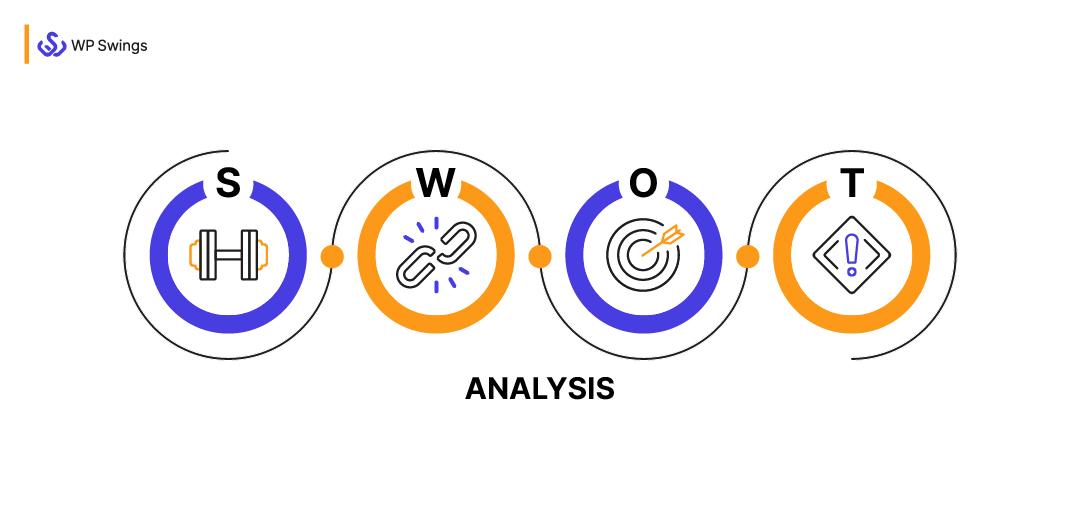
“Marketing SWOT analysis is cool, but strategic thinkers know that there is a point which:- Strengths become weaknesses- Weaknesses become strengths- Opportunities become threats- Threats become opportunities… Strategic entrepreneurs and marketers find the greatest insights hiding behind SWOT”.
So, analysis is extremely essential for a marketer to spotlight the various aspects that affect business growth. The best way to depict where your business is standing among thousands of competitors is to conduct a marketing SWOT analysis.
SWOT is an acronym that identifies Strengths (S), Weaknesses (W), Opportunities (O), and Threats (T) for every growing organization. In other words, marketing SWOT is a comprehensive strategy that collects information about both internal and external factors that may affect your business.
To summarize, strengths and weaknesses are internal factors while opportunities and threats are external factors. In this blog post, I will be highlighting some interesting insights related to marketing SWOT. As a result, you can use this as a guide to performing analysis for your business.
If you wish to conduct a SWOT analysis for your company too, then please take a look –
Article’s Outline…
(Jump to the section that interests you the most!)
What Is Marketing SWOT Analysis?
The swot analysis helps to determine your business goals and plan your marketing strategies and policies as per the strengths, opportunities, weaknesses, and threats. Also, with insights from marketing SWOT analysis, you can visualize all the factors that can make or break your success towards your business goals.
As I shared above, marketing SWOT analysis is one of the most popular tools used by companies to assess their strengths, weaknesses, opportunities, and potential threats.
In short, it gives you deep insight into your competitive opportunities and potential threats.
You should implement SWOT analysis in your company whenever you are
- Starting any new business venture or launching a new product/service
- Witnessing a rapid increase in competition
- Your business is achieving its objectives but not within a time frame
- There is a need to examine the performance of existing strategies
- Any new strategic plan is being formulated
Thus, you can see that it is an effective and profitable analysis that will always give you long-term results whenever it is used.
Understanding The SWOT Matrix For Effective Marketing Growth
So before we learn to apply the SWOT model to our marketing blueprint, let us understand the components of the marketing SWOT matrix.
The matrix is made up of four quadrants, which are obviously – Strengths, Weaknesses, Opportunities, and Threats.
Let’s take a clear view of each quadrant:
1. Identify Your Marketing Strengths (S)
The first quadrant is all about the things that your business is already doing well. It could be both tangible (resources, manpower, or machinery) and intangible (a brand’s attributes, a unique selling proposition, or your audience).
That is to say, it includes all the aspects that build the strength of your marketing strategy, like:
- Unique products and services develop your brand identity.
- Also, components like customer base, knowledge, technology, intellectual property, and patents.
- Your customer loyalty programs and efficient customer service.
- Pricing policy and a well-educated hardworking sales team.
- Core competencies play a vital role in maintaining your market position.
To know your marketing strengths, ask yourself the following questions:
- What are the advantages at your disposal to make your goals a reality?
- What tools are available to you for reaching your marketing goals?
- How to leverage your existing audience to reach your goal?
2. Evaluate Your Marketing Weaknesses (W).
The weakness quadrant is critical self-awareness. There are always factors that tend to hold back your progress toward your goals. A brand’s weakness can be, for example:
- Resources your competitors have but you don’t.
- Change in the business environment and government policies.
- Poor communication among team members. The adoption of video conferencing software for business helps bridge these gaps by enabling clearer, real-time collaboration.
- Increase in absenteeism, labor turnover, strikes, and layoffs.
- Increase in customer complaints and negative reviews.
If your business is dealing with problems like stagnant sales or unsatisfied customers, it is alarming to ask yourself the following questions:
- What are your competitors doing differently from your business?
- What are the latest trends that you’re missing?
- Are you facing resource limitations?
These are very few questions that will let you know where you’re lacking and what needs to be fixed.
3. Capture New Marketing Opportunities(O)
Opportunities are your tickets for something positive to happen. But you’ve got to claim it for yourself before anyone else does.
Here are a few ways to find opportunities for the marketing SWOT analysis:
- Opportunities comprise uncontrollable factors that belong to the external environment.
- Track new market trends and the latest customer preferences to stay relevant.
- Strategize your marketing policies for special day sales and the festive season.
- Analyze new technologies and promotional channels.
- Focus on employee retention by leveraging new training opportunities.
- Promote cross-selling and up-selling of products and services.
Here are some questions you must ask yourself if you’re on an opportunity hunt:
- Is there any underserved market or audience related to your niche?
- Is there anything that your competitors are missing?
- What new trends are emerging in my industry?
4. Resolve Potential Threats (T)
The last quadrant of the SWOT analysis for marketing growth is threats. Everything that is a risk to your marketing growth is a threat and needs to be resolved.
So what can fall under threat when we talk about marketing growth? Here’s the list:
- This includes uncontrollable external dimensions which may pose a danger to the existence of your company.
- It can include an indispensable increase in prices by your suppliers.
- Increasing government regulations and liberalization policies.
- Increase in the bargaining power of customers and suppliers.
- Any issues related to labor laws and trade unions.
Thus, by following a complete SWOT analysis, you will be able to prepare the blueprint of your marketing strategy more precisely and efficiently.
3 Examples Of SWOT Analysis For Marketing Growth
So now we know every element of the SWOT analysis for marketing growth. But for the sake of better understanding, let’s see some examples.
1. SWOT Analysis Of A Basic eCommerce Saas Website
Software as a Service (SaaS) products have become increasingly prevalent in the business world, offering several advantages for both providers and users. They are cloud-based software solutions accessible over the internet, eliminating the need for traditional software installations in short the plugins or extensions that eCommerce websites are installing today!
We can now begin with the marketing SWOT analysis of the eCommerce SaaS website. They offer robust inventory management software, capitalizing on its diverse feature set, scalability, user-friendly interface, responsive customer support, and strong data security measures.
However, it faces challenges concerning limited integration options, which could hinder seamless business operations for some users, and a potential need for expanded marketing efforts to gain more visibility and market share.
Striking a balance between feature enhancement and improved integrations while amplifying marketing initiatives will be key to maintaining and expanding its presence in the competitive SaaS landscape.
2. SWOT Analysis of WP Swings
WP Swings is our new brand, exclusively for our WordPress and WooCommerce audiences.
WP Swings Provide Solutions to Streamline the Functionality of Websites…
It was a big decision for our co-founders to create a sister brand and leave our already existing and flourishing brand MakeWebBetter, but we took this step after doing a thorough SWOT analysis.
We thought of our business model, and our team decided to take some quick actions. Therefore, we planned to hold a team meeting and use the good old marketing SWOT model to paint a new strategy.
Let me share with you our marketing SWOT analysis infographic format:
After we were done with the SWOT analysis, we decided to channel our marketing resources into fighting our biggest threats. Our goal was to increase our reach by making more and more people aware of WP Swings.
We also optimized our marketing strategy to retain maximum customers and focused on generating some traffic on our web pages. With the help of a marketing SWOT analysis, we were able to visualize what resources we already had and what needed to be optimized.
If You Are Still Confused About the Information Provided… Kindly Look Out for the Article Mentioned Below
3. Amazon SWOT Analysis
The first example was all about us and showed how we used the SWOT model for our own marketing growth. Now we’ve done the SWOT analysis for a very popular brand – Amazon.
When it comes to hovering over the top SWOT analysis, Amazon is your answer. As you know, Amazon is the leading eCommerce giant as well as a leading cloud player. No doubt its growth since its inception has been outstanding. Let’s have an overview of its strengths, weaknesses, opportunities, and threats.
What Are the Internal and External Factors of SWOT Analysis?
Opportunities and threats are usually regarded as external, while strengths and weaknesses are usually seen as internal. The concept of “strategic fit” describes how well a company’s internal strengths align with its external prospects.
Depending on how they affect the goals of the organization, internal factors are considered as either strengths or disadvantages. What can be considered a strength for one purpose might be a drawback (distractions, competition) for another. Personnel, finances, production capabilities, and the four Ps of the marketing mix may be among the contributing elements.
The main important part of Internal External factors of SWOT analysis is Strategy Planning…
So, here is the whole concept of strategy planning…
The TOWS Matrix for External-Internal Analysis
Simply doing a SWOT analysis will not work for you to improve your business plan. You have to establish your strategies on the basis of the 4 quadrants of the TOWS Matrix. So, it is very important to establish a connection between them to take impactful actions.
TOWS Matrix Model is a variant of SWOT Analysis, developed by Heinz Weihrich, an American International Business Professor.
The TOWS Matrix Model aims to develop strategic options from External and internal analysis for maintaining the ideal business administration flow.
a) Strengths-Opportunities (SO Strategy)
Devise your marketing plans by making the best use of your strengths in order to capture the base of wide opportunities. This can be achieved by –
- diversifying new market
- launching trending products
- reducing the cost of production.
So, list up those strengths which can be fully utilized in the given opportunity.
b) Weakness-Opportunities (WO Strategy)
This implies how you can make use of new opportunities to overcome your internal weaknesses.
For example – By identifying new market trends, you can easily enter those markets & generate much productive work for your employees. Introducing a structured employee rewards and recognition program can further encourage high performance and maintain employee focus as your business scales
Hence, this will help in reducing absenteeism and labor turnover.
c) Strengths-Threats (ST Strategy)
Utilize your strengths in such a way that you are able to overcome the possibility of external threats. For instance, many companies avoid the threat of rapid competition by opening different units of their company in different geo-locations.
Thus, it helps them to establish their brand identity at different locations.
d) Weakness-Threats (WT Strategy)
One of the best strategies to mitigate external threats is overcoming your weaknesses to tackle the challenges of external threats. You have to remove your internal weaknesses so that outside competitors may not take advantage of them.
- Convert your underperforming units into high-performing
- Develop unique selling policies
- Remove unethical policies
- Focus on hiring skilled employees
- Train your employees to do qualitative work rather than quantitative
5 Steps to Conduct Marketing SWOT Analysis
1# Define Your Marketing Goals
First of all, you are required to define your marketing goals. Decide which products and services require more marketing efforts. Inform your sales team about current sales targets. Make a complete audit of your prevailing promotional techniques and based on that decide on new objectives.
For example, many websites help in doing online marketing through SWOT & automate your task by providing tools like SWOT analysis templates, design templates, etc.
2# Scan the Internal and External Environment
Now after deciding your marketing goals, the most prominent step is to scan the external and internal environment. Look upon those factors that can influence your marketing policies.
Internal factors may include your company’s policies, workforce, or coordination, and external factors related to government policies, legal factors, and economic conditions.
Therefore, on the basis of these factors, you can easily evaluate the current scenario of your company and make relevant decisions.
3# Construct the SWOT Matrix
Classify internal and external scanning of the environment. Explore the factors that you can consider as strengths and weaknesses on the internal level and opportunities and dangers on the external level.
After classification, make a complete proforma of a SWOT Matrix. It is a 4-quadrant matrix in which each quadrant is filled with different factors. With the help of this, you can easily identify both favorable as well as unfavorable factors affecting your business decisions.
4# Develop SWOT Strategies
Making the SWOT Matrix alone does not constitute the completion of your effort. Establish a combination of each quadrant to formulate specific strategies that may help you draw up your marketing plan. Examine how you can make use of your strengths to overcome your weaknesses & threats.
These strategies will prevent you from any uncertain situations & accordingly prepare your contingency plans.
5# Evaluate Your Marketing Policies
Evaluate your marketing policies from time to time to determine whether they are working in the right direction or not. Consequently, it will help you to know where you are lacking in your strategies.
Analyze the progress of your marketing results from the previous year and the innovations you have included in your strategic planning, and keep updating your SWOT analysis as per the changing environment.
Frequently Asked Questions (FAQs)
Q1. How Do You Create A Marketing SWOT Analysis?
– To create a marketing SWOT analysis you must follow these simple steps,
- Define Your Marketing Goals
- Scan both the external and internal environment
- Construct the SWOT Matrix
- Develop SWOT Strategies
- Evaluate Your Marketing Policies
Want to know more about these steps? Refer to the section mentioned above to get an in-depth visualization of it.
Q2. Why Is SWOT Analysis Good For Marketing?
– Analyzing marketing opportunities or conducting a SWOT analysis helps you understand your strengths, weaknesses, threats, and opportunities. This further helps you to make a marketing plan that caters to your business objectives.
Q3. What Are The 4Ps Of Marketing SWOT Analysis?
– The 4Ps of marketing SWOT analysis are Product, Price, Place, and Promotion. These are significant because they constitute the majority of the marketing plan, as almost all the activities are dependent on these factors.
Q4. What Is The KPI In SWOT Analysis?
– The KPI in marketing SWOT analysis is the “Key Performing Factor”. They are there to prove the return on investment of the work that went into building those channels. For example, good metrics mean your social team is connecting with your target audience and your brand is hitting its goals.
Q5. What Is KPI Technique?
– Key performance indicators (KPIs) refer to a set of quantifiable measurements used to gauge a company’s overall long-term performance.
Wrapping Up!
So, now you know what this SWOT for marketing growth is about. The ultimate source of improving your marketing activities is to hold up your strengths and overcome weaknesses and external threats.
In order to ensure your business position in the market world, it is necessary to keep on updating yourself with new changes and opportunities. In conclusion, a SWOT analysis is one of the most straightforward and adaptable reports that highlight all objectives, milestones, and initiatives that should be communicated to managers as well as all other stakeholders.
So, analyze your marketing policies today and conduct your SWOT analysis to discover much better approaches.
Also, share your findings with us in the comment box below!!

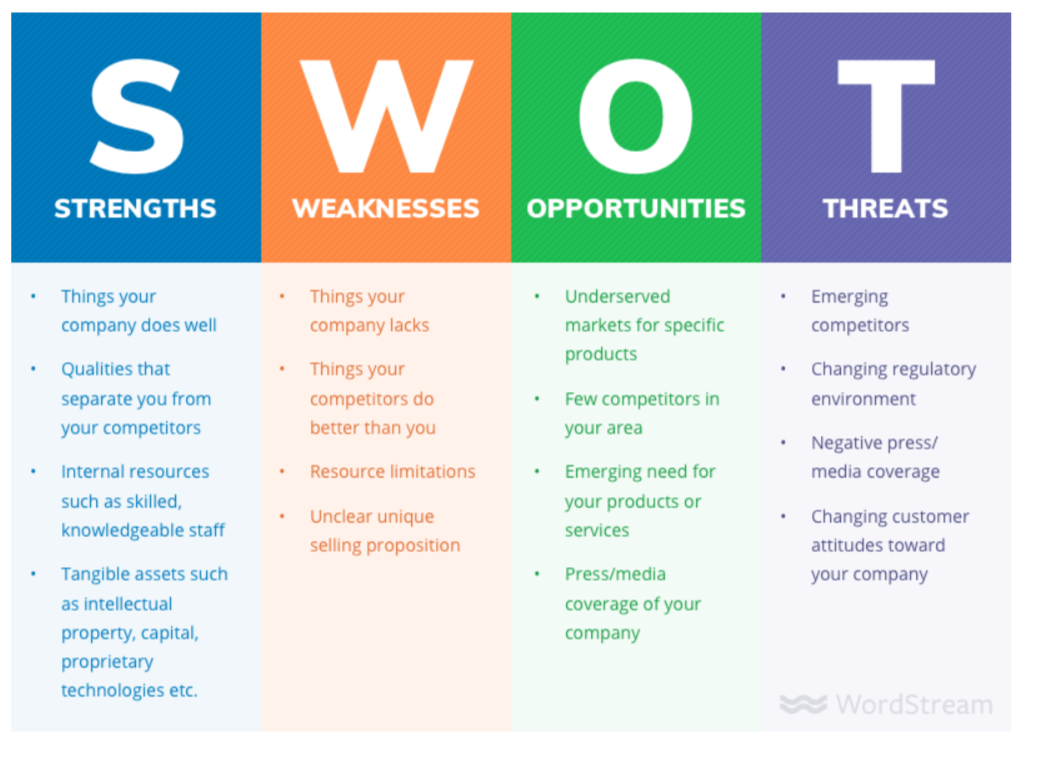
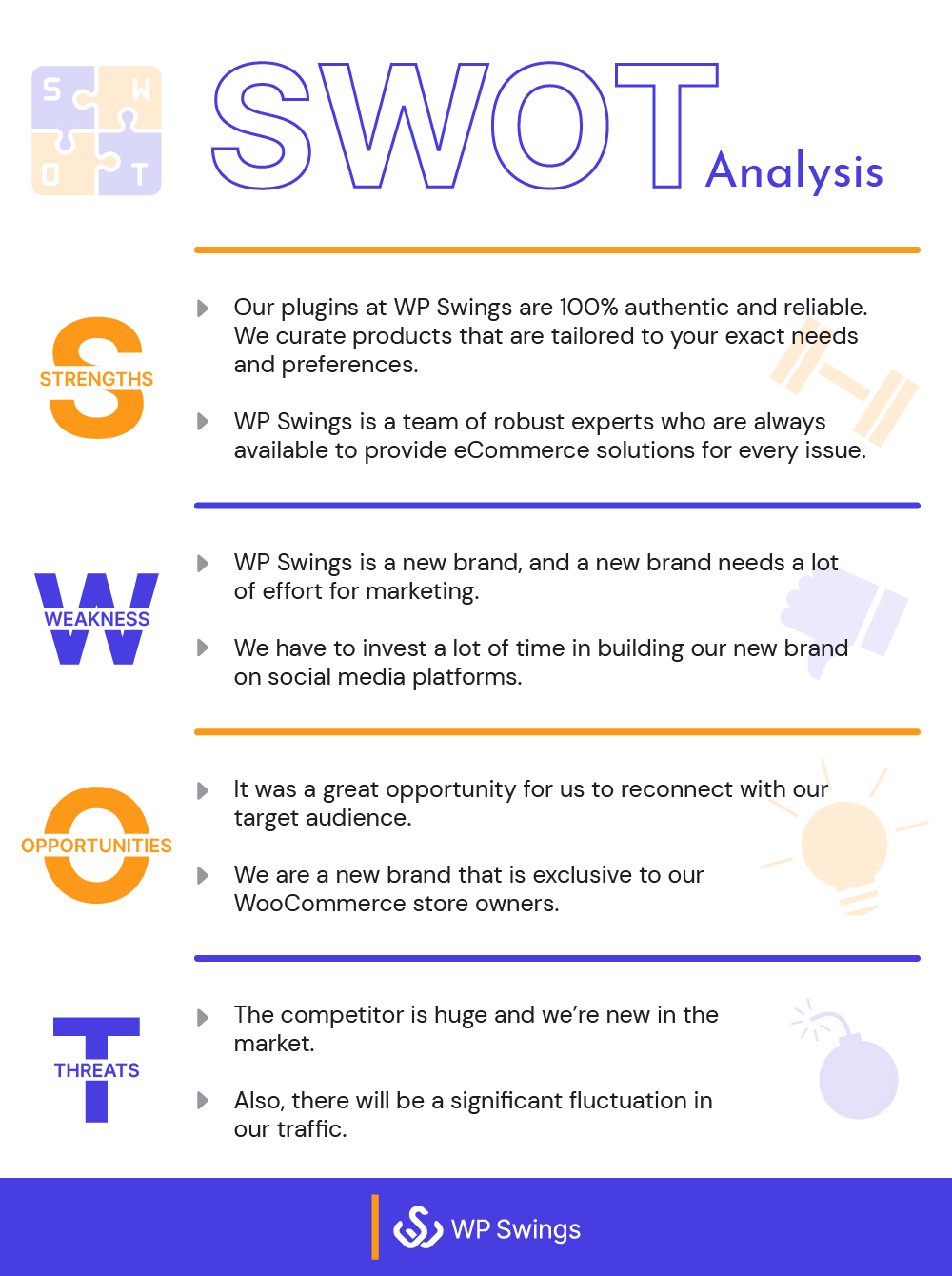
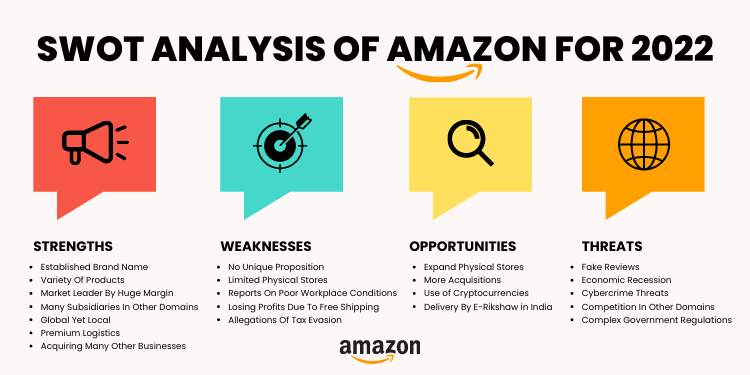
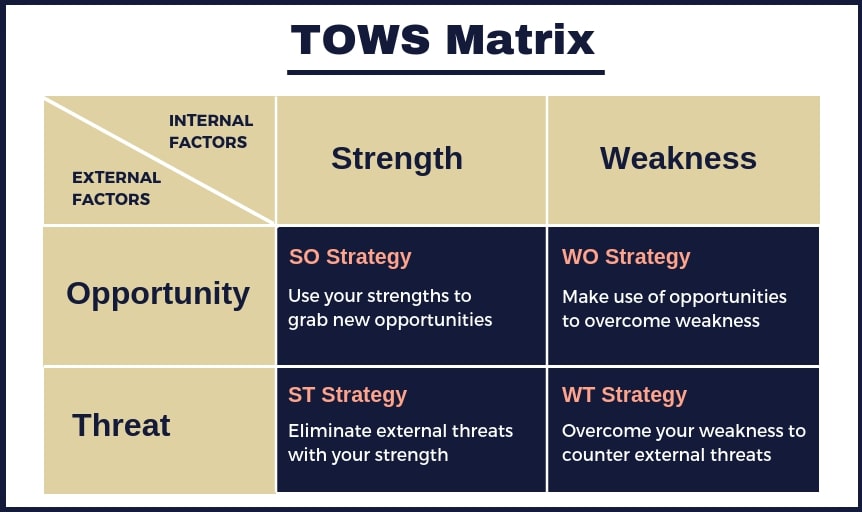








Hi,i completely read the blog about SWOT Analysis For Marketing Growth and i completely agree with the information . The blog are very informative for me and others , The information really impress me.
Thank you Bizzlibrary for your kind words. I’m glad you enjoyed reading the article.
This is exactly what I am looking for. I will schedule a time to review this in greater detail. Thanks!!
I’m really grateful Kaizan that you found the exact information in our article. Stay tuned for some more interesting blog posts.